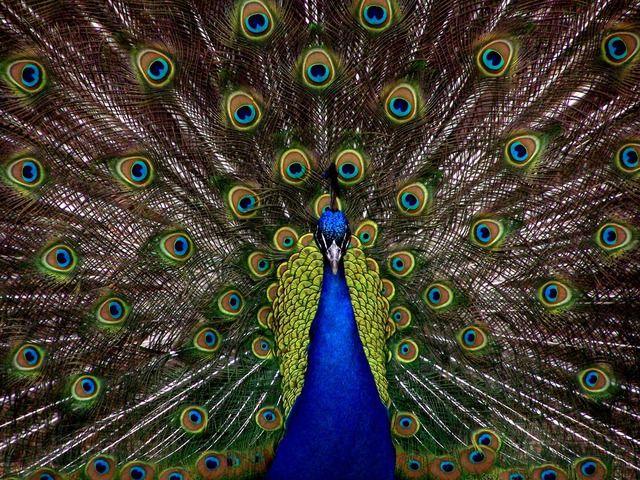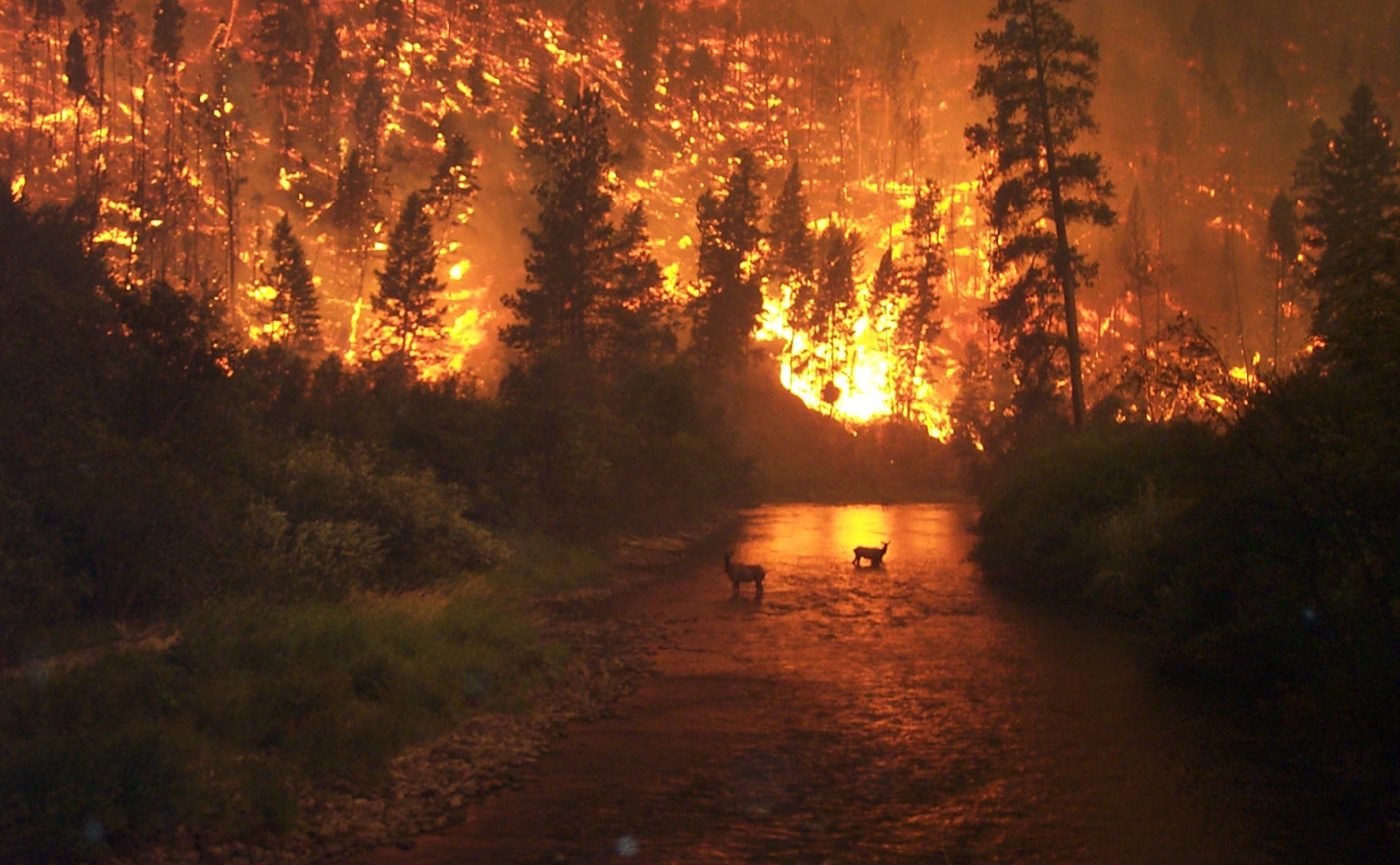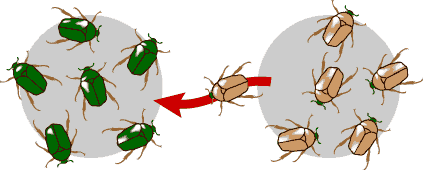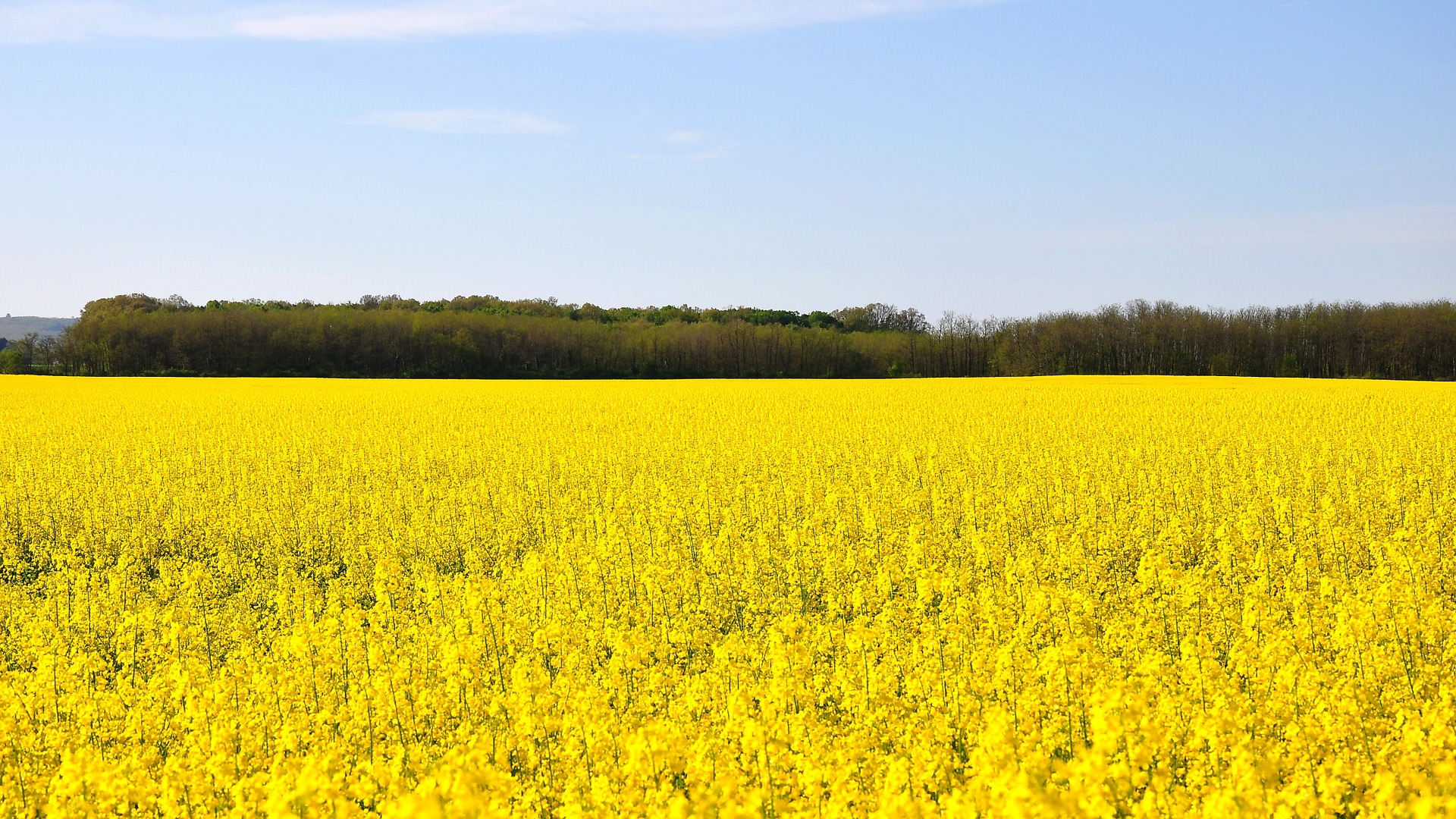Interactions and Change
Selection
MINDS ON
Survival of the Fittest
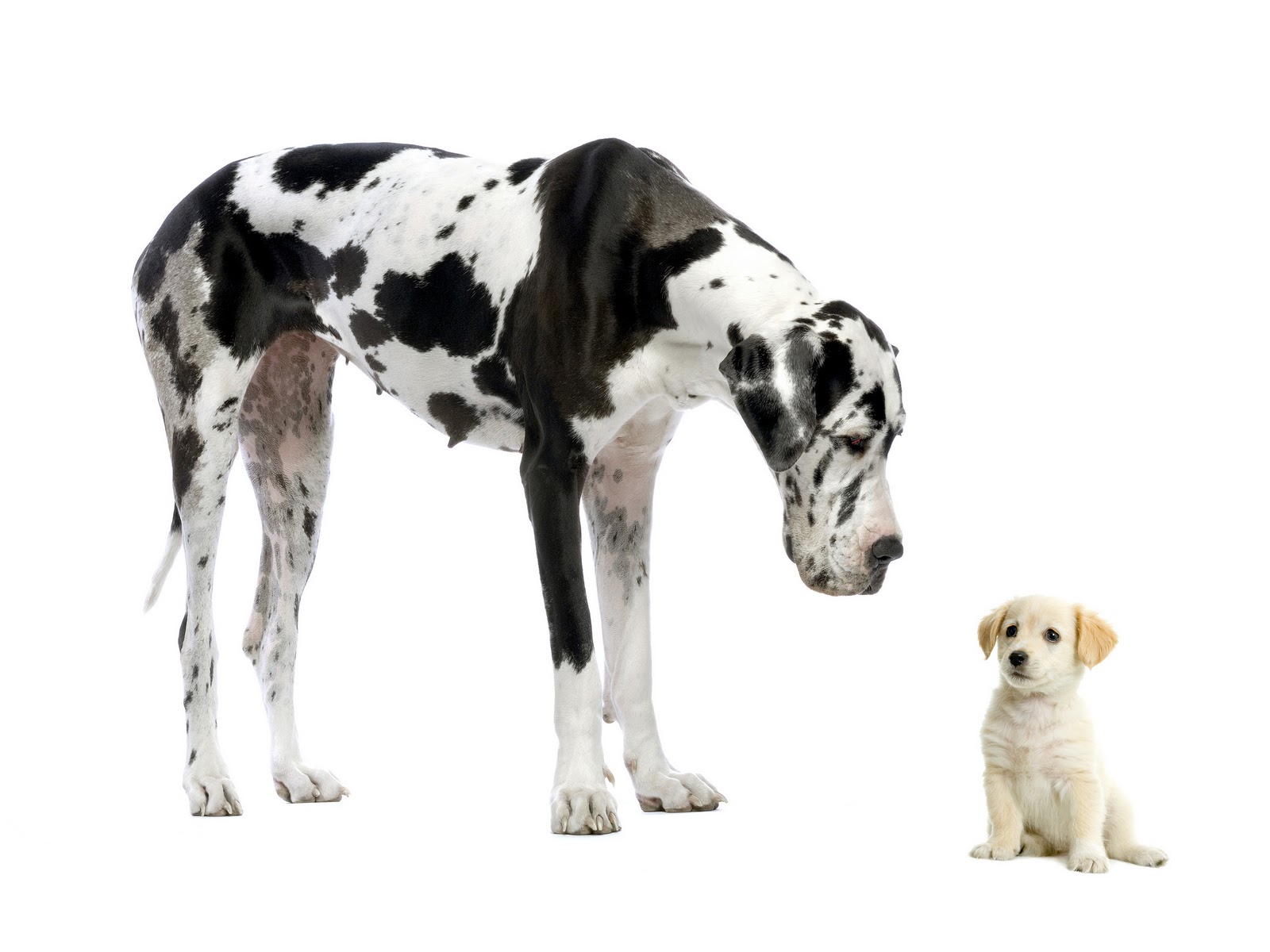
You have most likely heard the phrase, ‘survival of the fittest,' but what does it actually mean?
 Survival of the Fittest
Survival of the Fittest
Without doing a search to see the true definition, jot down a few ideas of what you think the phrase ‘survival of the fittest’ means.
Bill Shape Matters
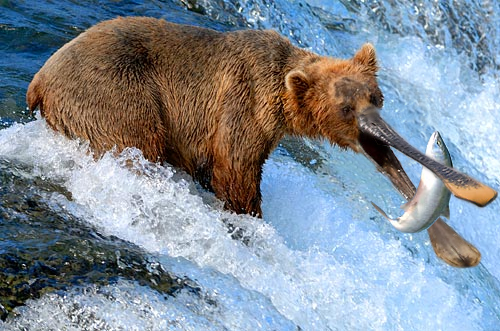
Have you ever thought about why you see certain animals in one area and not in another? The climate is basically the same across your region, yet you expect to see different organisms in different environments within that region. What makes one habitat perfect for one animal but not another? Maybe it isn’t the habitat at all, and it is the animal, itself, that is perfect for that environment.
Imagine that there is a family of three birds in an area. Due to genetic variation, each bird was born with a different shaped bill (yep, they have a few other noticeable differences as well!) One has a ‘spoon’ bill, another has a ‘tweezer’ bill, and the third has a ‘flat’ bill.


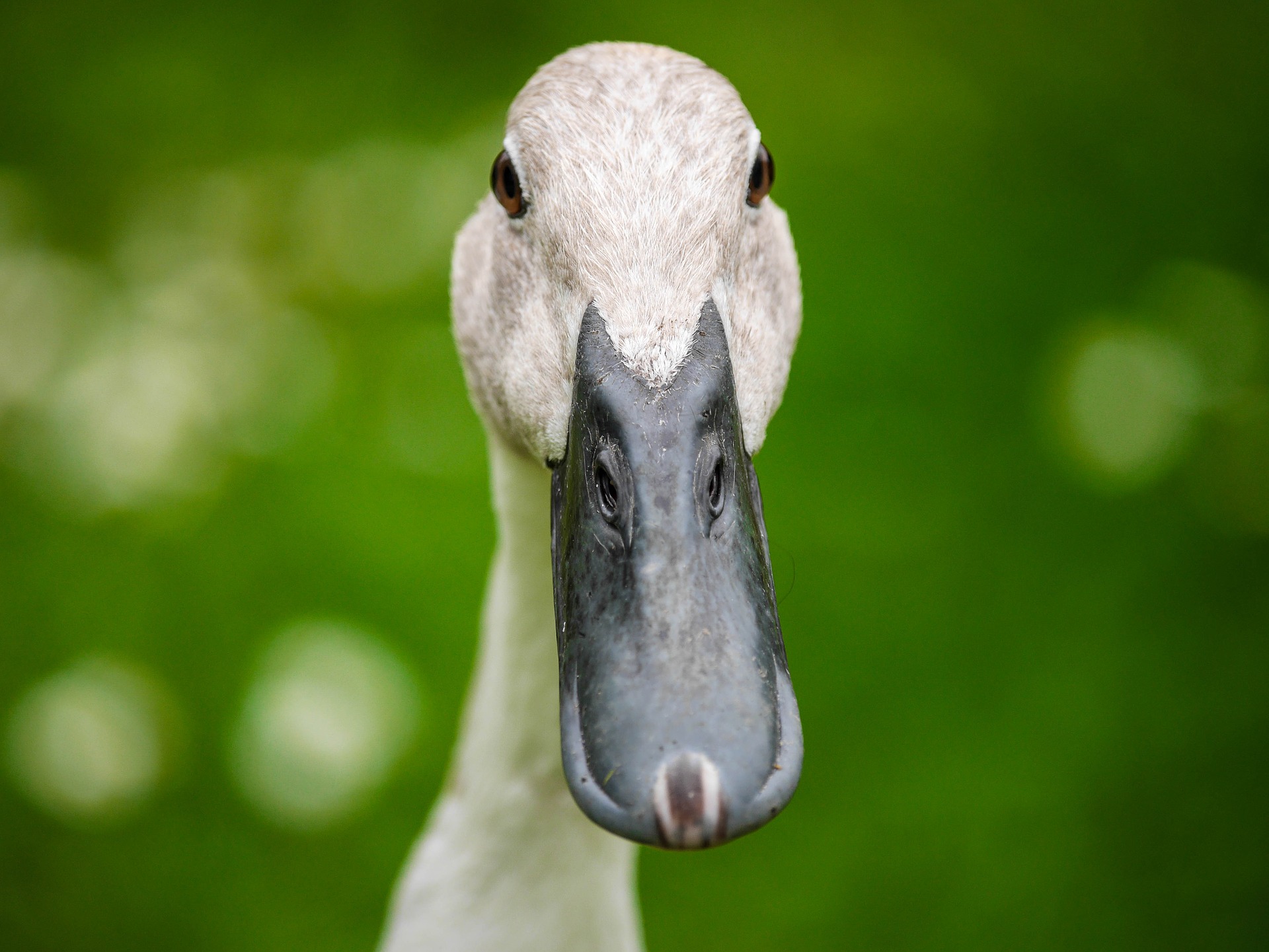
Who is the Fittest?
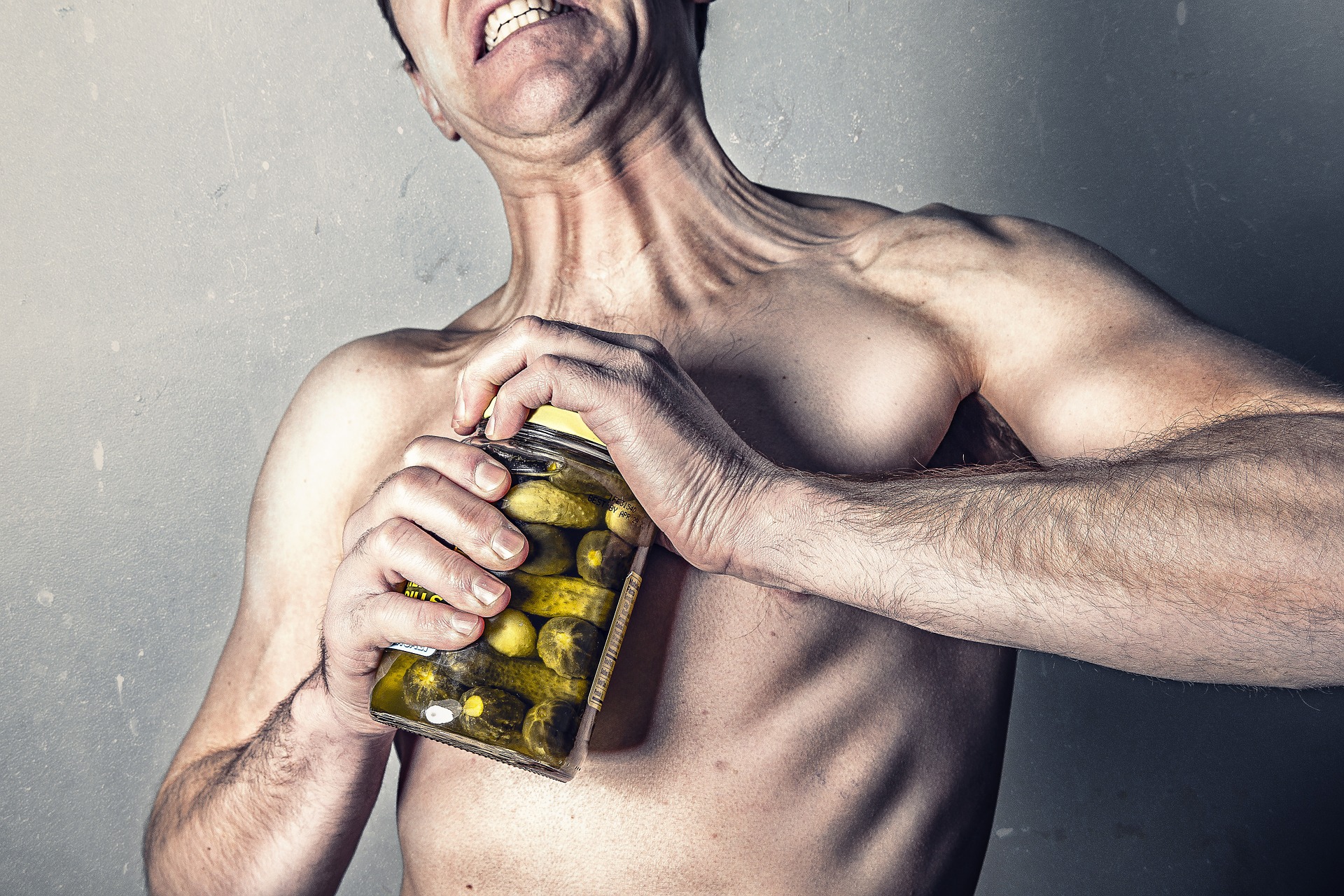
Tasks like the one you just tried can give an inaccurate idea of what survival of the fittest truly means. It is easy to think that the best suited individual in an area is the most fit for survival. This does make sense, but there is more to it. Being the strongest, fastest, and most intelligent means little if that individual cannot pass its genetic material on to the next generation.
Survival of the fittest essentially deals with the idea of natural selection. You will soon see that natural selection relies on a number of different aspects, including cooperation among individuals for the good of the population. This isn’t an ‘every organism for itself’ type deal! This is a good time to go back to the survival of the fittest definition you created earlier and make any necessary tweaks to it.
This activity will take you through the processes of natural and artificial selection, and how these selective pressures can help to drive evolution. As you explore the content in the Action section, consider how human activity can influence the traits displayed by certain organisms, as this will play a substantial role in the culminating unit activity. You will see that the biotic and abiotic environment itself plays an important role when it comes to the fitness of the organisms that live in it. After all, changes in the phenotypes of the population are often initiated by changes in the environment.
ACTION
From Nothing to Something
From the last unit, you know that microscopic organisms such as bacteria and protists can be found almost anywhere. There are some species of Archaebacteria that can live in extreme conditions such as boiling water near undersea hydrovents! What about the more complex multicellular species of plants and animals? These larger organisms often have more specific needs in terms of habitat and environmental factors. The Selection Activity showed you how the growth of plants can be impacted greatly by a number of different factors within that ecosystem. Because of their role as a food source and habitat for animals, the growth of plants in an ecosystem affects the growth of other species.
For example, you would expect to see a beaver live closer to a stand of alder and poplar trees (which are some of their favourites) rather than living in a pine forest. This helps illustrate that the plants established in an area will have a major impact on the animals that live there.
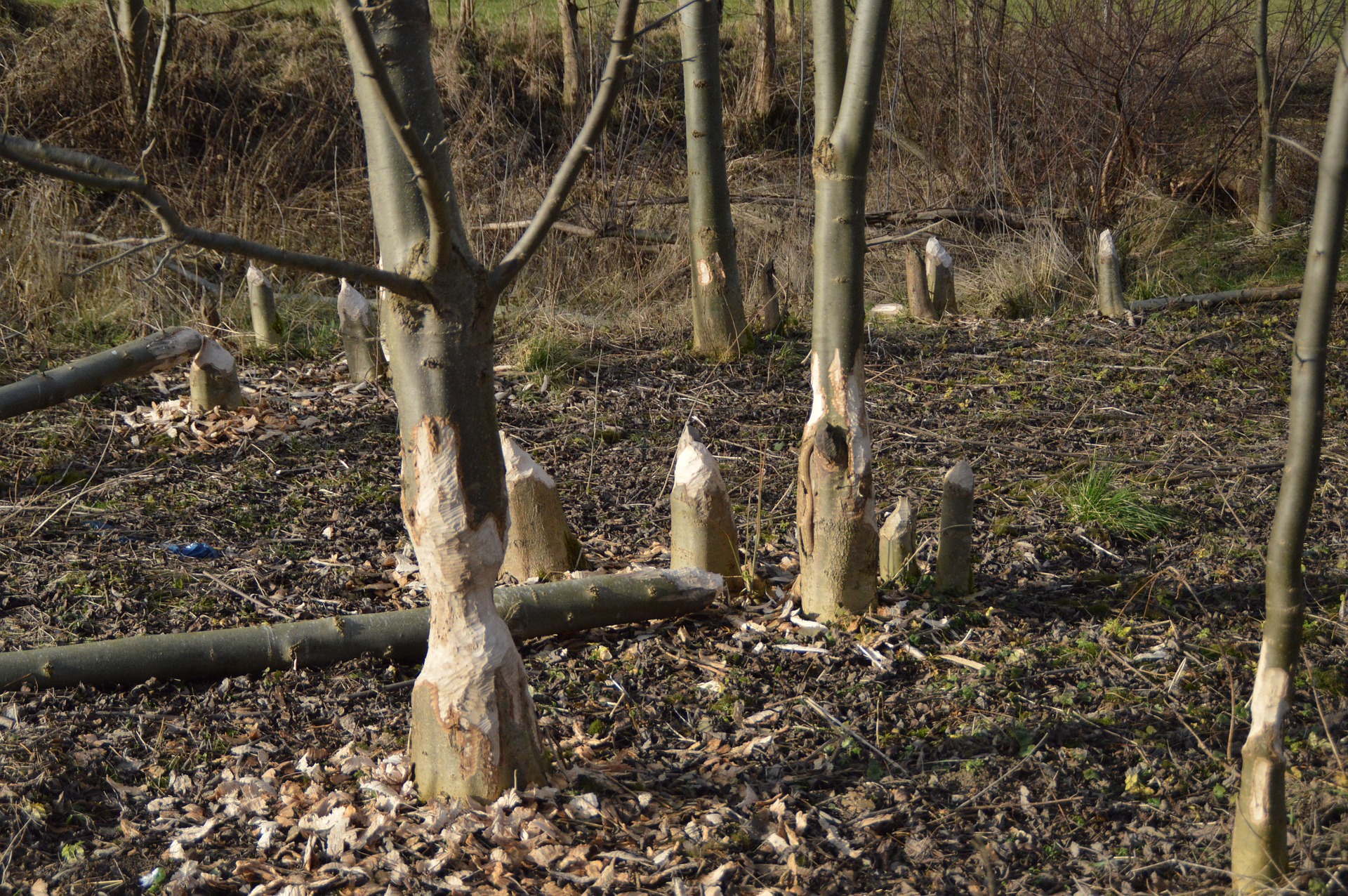
Before we start looking at natural selection in terms of genetic processes and heredity, it is important that you understand the influence of the interactions between plants, animals, and the environment on the ‘fitness’ of the animals that live there. As the plants change, so do the other organisms that live there.
Succession
Ecological succession(definition:The process by which the structure of a biological community evolves over time.) is the gradual change of the species that make up a community over time. All ‘land’ on Earth had a beginning. This beginning started with molten magma coming to the surface and solidifying into solid rock. This process of land formation is still happening on our planet. In fact, starting on May 3rd of 2018, lava has been creating new land on the big island of Hawaii. Browse through the following video to see the stunning power of this magma flow.
When the magma cools and solidifies, the result will be solid rock. The heat of the magma destroys all life in its path, and the existing soil is covered. Hawaii is a volcanic island, but somehow that bare, barren rock becomes the foundation for lush plant life. How does this happen?
When you start with bare rock, primary succession is the process that takes place. The following interactive goes through the steps of primary succession.
PrimarySuccession
The succession from bare rock to climax community can take hundreds of years. As the plant life changes, so does the microclimate(definition:The climate in a very small or restricted area.) in that area. Plants will help moderate temperature, wind and moisture levels. The changes in the region mean that a plant that once thrived may not be the most fit for the current conditions. As this happens, new plants take over.
Here is an interesting time lapse video showing the beginning stages of succession after the major Mount St. Helens eruption in 1980 in the Western United States:
As the vegetation and the climate changes, different animal species will be attracted to the area. Insects will start to find shelter and food in the beginning stages of succession, and then larger animals such as mice and birds will start to move in. As the shrubs and bushes establish themselves, there will be more shelter for larger animals. The diversity of life continues to increase as the area heads toward its climax community.
The change in biodiversity(definition:The variety of life in the world or in a particular habitat or ecosystem.) in the plant communities will drive change in the animal communities, as well. As the habitat changes, so do the resources in that area. An animal that was best suited for a grassland may not be the best fit for a habitat dominated by forest trees. As resources change, so too do the animal species who will dwell in that area.
Secondary Succession

Secondary succession is similar to primary succession, only this occurs after an established area has been disturbed by an event such as fire, flood, or human activity. The major difference between the two types of succession is the starting point. Unlike primary succession that starts with bare rocks, secondary succession starts with the soil and organic material that is left after the disturbance. This means plants can root soon after the disturbance as compared to waiting until soil is produced from bare rock.
If there is no human intervention in the secondary succession, it is possible that the climax community that forms may not be the same as the one that was established before the disturbance. Competition between plants and animals that move in during the succession process can have a large impact on the climax community that forms.
Take a few minutes to view the following video that shows some before and after images of succession. It is interesting to see the progression from one stage to the next. At the start of the video, an area after a forest fire is mentioned. Based on what you see, would the process that takes place after the fire be primary or secondary succession? Where do the (pioneer) organisms come from in the examples described in the video?
The habitat, and its position in the succession process, can help determine how successful an individual organism will be in terms of its survival. The environment has an impact on the fitness of an organism, but can other factors, such as human interaction increase or decrease its fitness?
Winds of Change: Evolution of Species
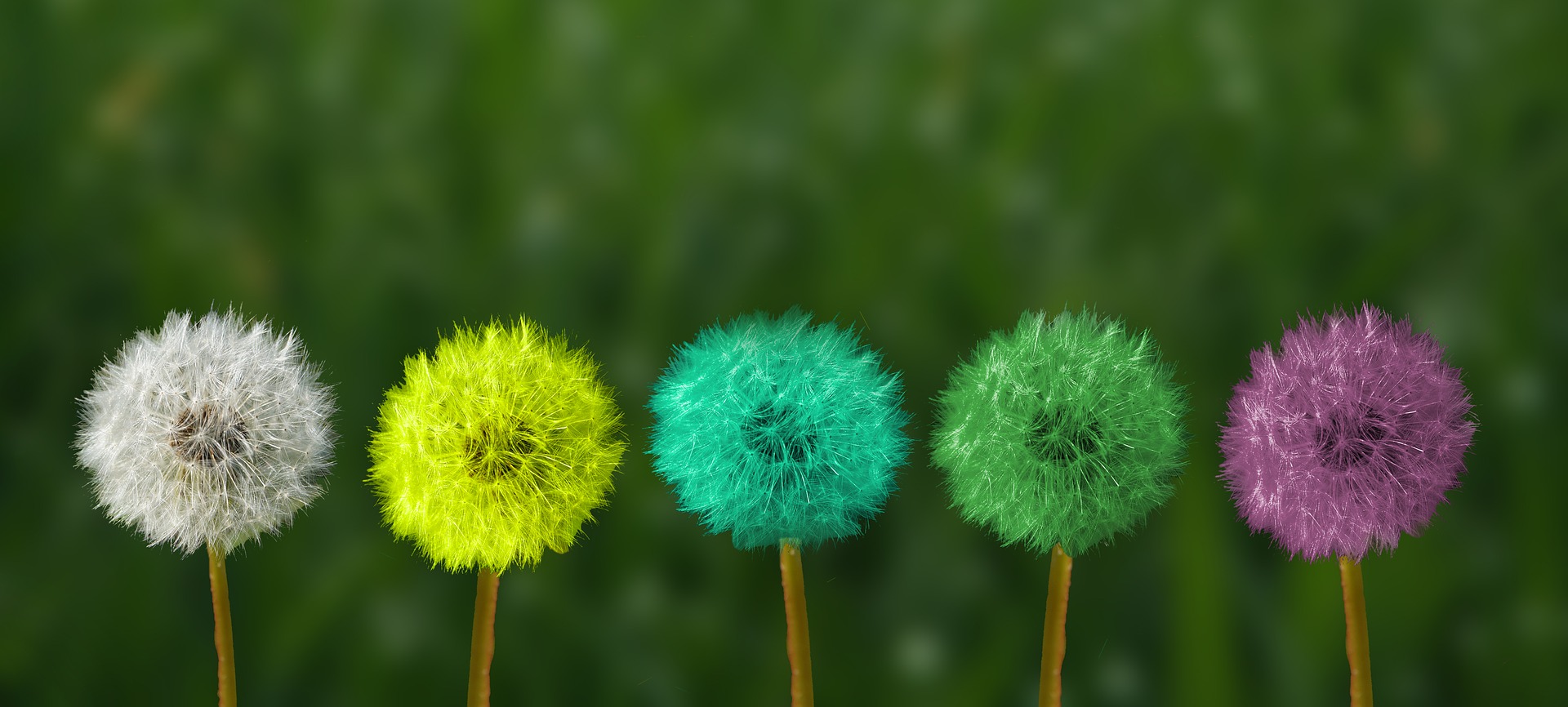
The last section illustrated how changes in plant biodiversity within an area or ecosystem impact the animals that live there, but what about changes that occur within a species, itself?
In Unit 1, you saw how important is was for classification systems to be dynamic, as well as adjustable to allow for new information. Not only are we finding more new species all the time (and unfortunately, losing them, as well), the species that we do know are changing. These changes don’t happen overnight, and they aren't changes in a specific individual species. Instead, these changes happen to a population over generations. Simply put, species change, or evolve, over time.
It is important to understand that evolution(definition:Change in the heritable characteristics of populations over successive generations.) takes time, and involves a number of factors. In the Minds On section, you looked at birds that had different shaped bills, and the impact this variation would have based on available food resources. This type of variation can drive evolution, but it may not lead to evolution unless that trait is passed on to the next generation and beyond.
Not all evolution is based on useful adaptations that will help that species to survive. In fact, evolution is often based on errors that force change within a population (beneficial or not). We will learn more about these errors later on in this activity, but to see an example of an evolutionary change that was not beneficial, take a look at this article about the Antarctic icefish.
In the past unit, you looked at how sexual reproduction results in genetic variation. In the last few activities, you saw how the process of meiosis generates variation in gametes and how offspring inherit traits from both parents. It is these traits that can make individuals more fit or less fit for the environment in which they live. Are those the only processes that push evolution in a population from one generation to the next? Nope!
What Drives Evolution?
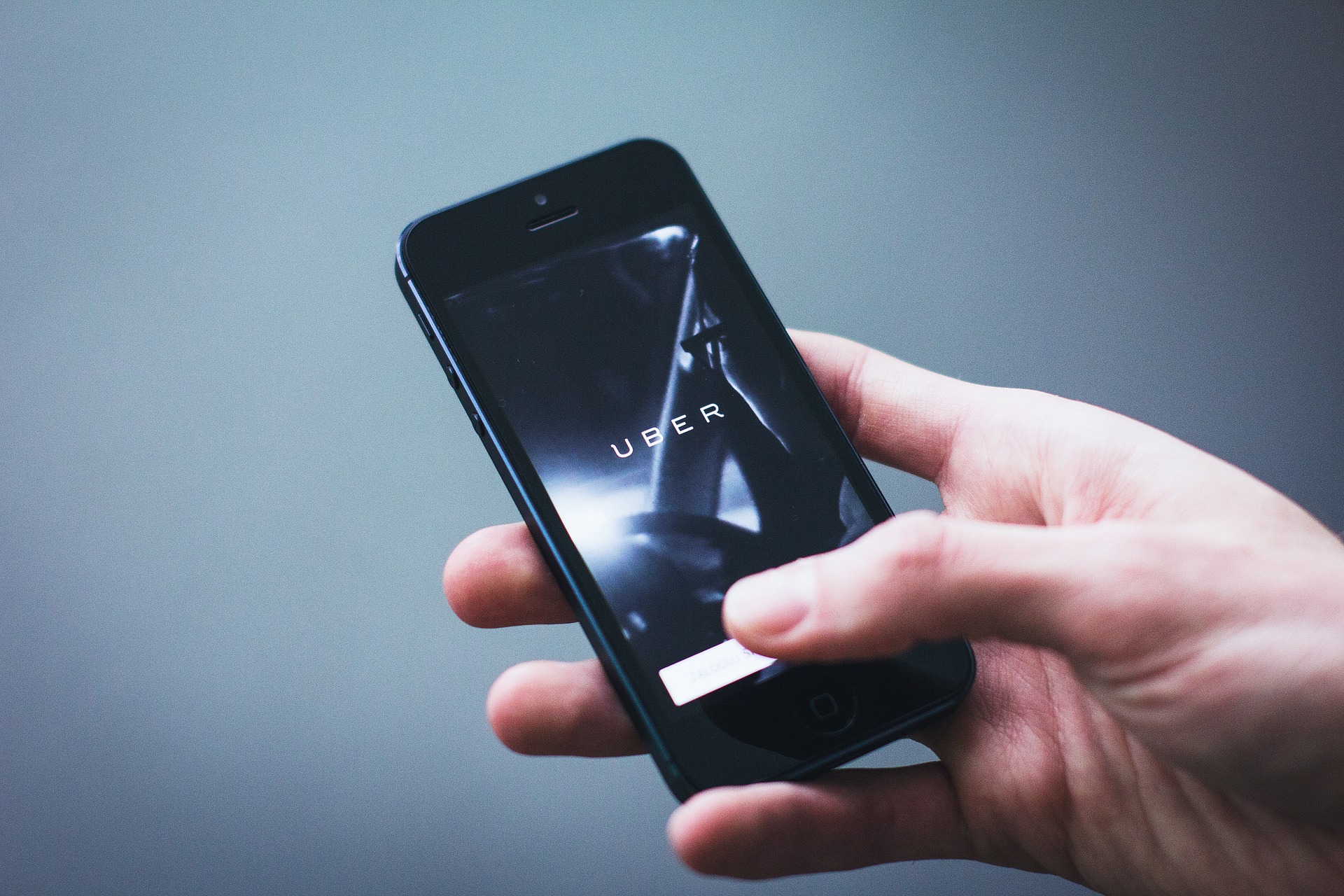
Evolution is not only about the mechanics of transferring DNA and its associated characteristics to offspring. There is much more to it.
Before we look more deeply into evolution, it is important to remember that it is the theory of evolution that we will be exploring. This means that a number of plausible and scientifically accepted ideas have been used to explain evolution. Although these ideas have been well-substantiated and based on evidence, theories are subject to change as scientists learn more and more about a subject. Evolution is one of those subjects that is hotly debated (especially on the Internet!), and it is important to keep an open mind and give each theory a chance.
There are many misconceptions about evolution, many of which are caused by images like this:
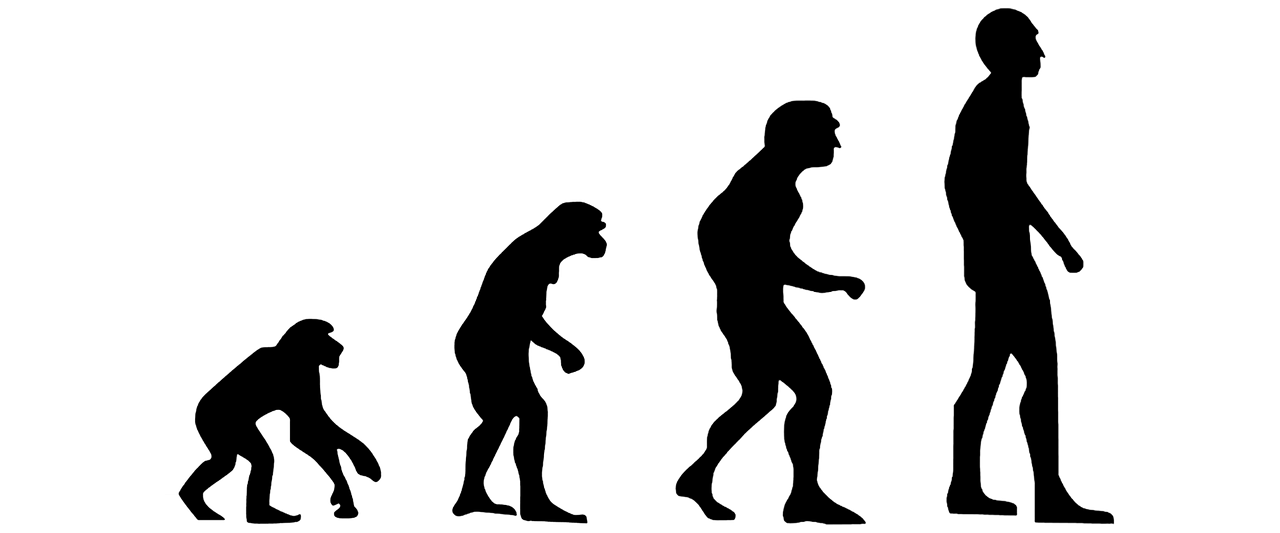
People did not evolve directly from apes. Instead, there is evidence that humans share a common ancestor with modern apes that existed five to eight million years ago. It is believed that two separate lineages diverged from that common ancestor, with one evolving into apes, and the other into humans. This next image shows how species are related based on those common ancestors.
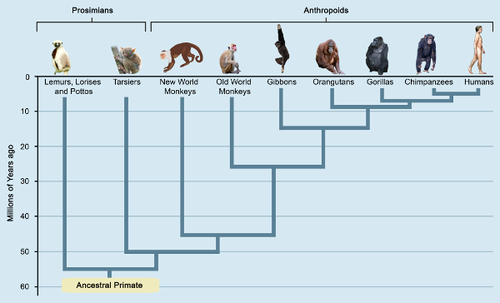
This video tries to dispel some of the common misconceptions about evolution.
Mechanisms of Evolution
There are a number of mechanisms that drive evolution, but the main five are mutations, natural selection, sexual selection, genetic drift, and gene flow. You will look at each one of these mechanisms below.
Mutations

In the last activity, you looked at traits being passed from one generation to the next. Through your study of meiosis, you understand how crossing over and independent assortment result in variation between the gametes produced. But wait...why are there different alleles for the same characteristic in the first place? Why is it that one person can roll her/his tongue while another can’t? If all humans are the same species, shouldn’t we all have the exact same genes and express the exact same traits?
Although the process of DNA replication and cell division is amazingly robust and involves its own system of proofreading, some errors can still occur. It is these errors, or mutations, that produce the different alleles for a characteristic.
Some mutations only affect the individual, while others can be passed onto the next generation through the inheritance patterns you just explored in the last activity. It is these heritable mutations(definition:A mutation that can be passed from parent to offspring.) that have an impact on a species as a whole.
The word mutation is often associated with harmful defects, but that is not always the case at all. When talking about evolution, you need to determine what the impact that the mutation has on the chances of that individual passing on its genetic material to the next generation. After all, that is what success is all about.
A majority of mutations that occur don’t have any impact on an organism's ability to pass on DNA to its offspring; that is to say that the change does not create an advantage of disadvantage in terms of reproductive success. This type of mutation is referred to as a neutral mutation.(definition:A mutation that does not increase the reproductive success of an individual.)
There are also harmful and beneficial mutations. Again, the harm or benefit is based on the impact it has on reproductive success. If it is a deleterious,(definition:A mutation that reduces the reproductive success of an individual.) or harmful, mutation, then the organism’s ability to pass on genetic material is decreased. If the mutation is a beneficial mutation,(definition:A mutation that increases the reproductive success of an individual.) the ability to pass on the traits to the next generation is increased.
What effects do these different types of mutations have on evolution?
 Challenge!
Challenge!
Neutral mutations have no real impact at all, but neither do some harmful, or deleterious, mutations. How can that be? Why do you think that some harmful mutations wouldn’t have an impact on the population in the next generation and beyond?
Answer
If a mutation is harmful, it may prevent the organism from reaching sexual maturity or from successfully finding a mate. This means that the organism will not be able to pass on the mutation to the next generation. Less harmful mutations may still be passed on if they don’t have a catastrophic impact on the organism.
Remember, harmful mutations decrease the chance of passing on genetic material. If that individual does not produce offspring, then the mutation will not be passed onto the next generation.
On the other hand, beneficial mutations increase the chances of reproductive success, in that the mutation makes the individual more fit for the current environment in which it lives. This means that these mutations, if heritable, will be passed on and can shape the population in the future generations.
See if you can determine if the mutations in this interactive are neutral, beneficial, or harmful. Drag the mutation’s description to the type of mutation you think it most likely falls under to see if you are correct.
Mutations
Being able to pass your genetic information and traits to the next generation is the main biological goal of life. This is where the idea of survival of the fittest comes into play. Based on the current conditions, the fittest individuals are the ones that are able to survive and pass on their DNA to their offspring. Being the strongest or fastest doesn’t mean much in terms of evolution unless those traits are passed onto the next generation. This is the basis of natural selection.(definition:The process in nature by which only the organisms best adapted to their environment tend to survive and pass on their genes to the next generation.)
Evolving Ideas
Discussions about evolution almost always revolve around the theories of Charles Darwin. You will soon see that this course isn’t much different! The contributions that Darwin made to our understanding of evolution cannot be underestimated, but it is important to realize that many other scientists also had a hand in the development of these theories. To this day, there are scientists studying evolution and what drives it. The following interactive shows you some of the ideas that have been proposed before and after Darwin’s theories. As you explore this interactive, notice how earlier ideas are used with new evidence to further scientific understanding. This is the same process you are using in the investigations in this unit.
Theories
Natural Selection

This activity has so far shown how certain individuals have traits that make them better suited or have a better ‘fit’ for the conditions in which they exist. These organisms then have a better chance to pass on their genetic information to the next generation.
Charles Darwin, an English naturalist, geologist, and biologist, published a book in 1859 titled On the Origin of Species. It detailed the theory of natural selection. After studying the differences in populations of similar species in different environments, Darwin saw how nature favoured the reproductive success of certain individuals. In essence, nature ‘selected’ which organisms would pass on their genetic information. Evolution was therefore a result of this natural selection over generations.
Darwin theorized that different groups of a single species could evolve into distinct species as a result of their environment. This allopatric speciation(definition:Speciation, or species formation, that occurs when biological populations of the same species are isolated from each other due to geographic barriers.) occurs when groups of the same species are separated by geographic barriers such as great distances or mountain ranges and not allowed to interbreed.
This video will give you a nice overview of Darwin’s travels and how his observations led to his theories. As you watch the video, see if you can identify some of the geographic barriers Darwin observed between similar species on the Galapagos Islands.
Darwin based his theory on observations that he made while studying various populations. Pay close attention to how Darwin recorded his observations, made inferences(definition:A conclusion reached on the basis of evidence and reasoning.) about what the observations represented, and then produced a theory based on those inferences. This is the process that you should go through whenever you participate in an inquiry. You have been thinking about hypotheses throughout this unit. You will have the opportunity to analyse population data in the Consolidation section. ‘Be like Darwin!'
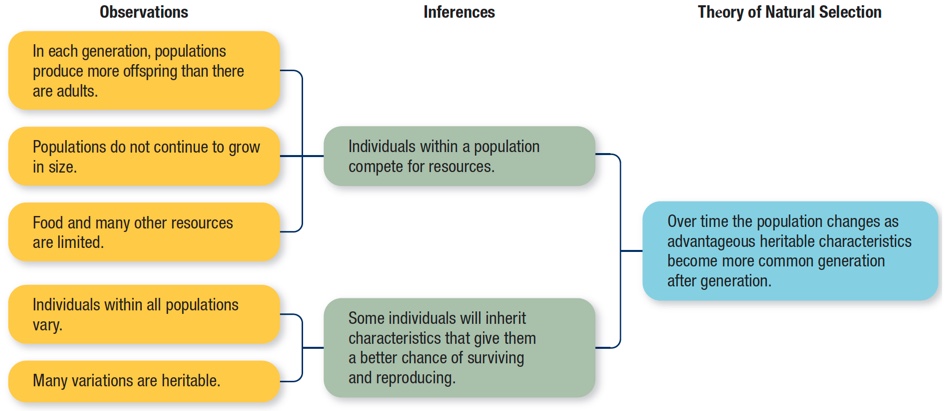
This video does an excellent job of showing how natural selection can change the makeup of a population over generations. As you watch the video, see how the phenotype frequency(definition:The number of individuals in a population that have a specific observable trait or phenotype.) of different traits in a population changes over generations.

Evolution doesn’t mean that species are always gaining new traits. It can also mean that certain traits are being lost as they are no longer needed. Remember, evolution is change over time, so any change fits the definition.
Take a look at this interesting video to see some of the human traits that have been lost over generations, and how we still hang on to slight remnants of these traits, called vestigial features.(definition:A non-functioning or marginally functioning structure that is similar to a fully functional feature in closely related species.)
It is quite easy to see the advantages of natural selection. Survival of the fittest means that the best genes of a population will be passed on to the next generation, resulting in a better chance of survival in certain conditions. As those conditions change over time, so do the genetic traits of the species. You will have a chance to look at a specific example of this in the Consolidation section.
Types of Natural Selection
Natural selection can be categorized by the impact it has on an allele frequency(definition:The proportion of individuals in a population carrying the same allele.) within a population. Certain traits may be selected against, as you saw in the video above, while others are selected for. The following interactive will demonstrate the differences between the main types of natural selection: stabilizing selection, directional selection, and disruptive selection.
Selection
Selection Pressures
Why does a change in the environment in which an organism live have an impact on its fitness? With a change in environment, comes a change in the selection pressures(definition:The set of all the environmental factors which define whether an organism will be more or less successful at surviving and reproducing.) with which the organism must deal.
Pressures such as competition with other species, resource availability, and disease all play a role when it comes to an organism's fitness in a given environment.
To remember the main selection pressures that species must deal with, think about a panda paw. How does a panda paw have anything to do with selection pressure you ask? Click on the panda below to find out!
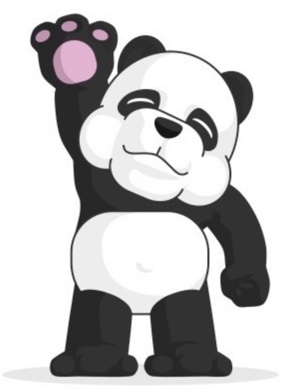
Mechanisms of Evolution Continued
The final three mechanisms of evolution you will look at - sexual selection, genetic drift, and gene flow - are presented in the following carousel.
The five main mechanisms of evolution described above can be remembered by looking at your hand. This is explained in the video below. It is important to note that there are multiple names for each mechanism. While you watch this video, make sure you can relate each mechanism to what has been discussed in this activity. Whenever you see an example of evolution, try to determine which of the five mechanisms were involved.
Also, pay particular attention to the ideas of microevolution(definition:Evolutionary change within a species or small group of organisms, especially over a short period.) and macroevolution(definition:Large scale evolutionary changes including the formation of new species.) that are presented at the end of the video.
When Nature Just Isn’t Enough...
Natural evolution has a way to make sure that populations can survive and continue on generation after generation even as the environment in which they live changes.
Now, you know that humans can’t resist getting involved! In fact, human interaction with this natural process has been going on for thousands of years. From the domestication(definition:To convert or tame animals and plants to live in close association with humans.) of animals to the cultivation of specialized crops, humans have had an effect on the evolution of a vast number of species. The question is whether this interaction has had a positive or a negative impact on the genetic diversity of this planet.
...Humans Interfere
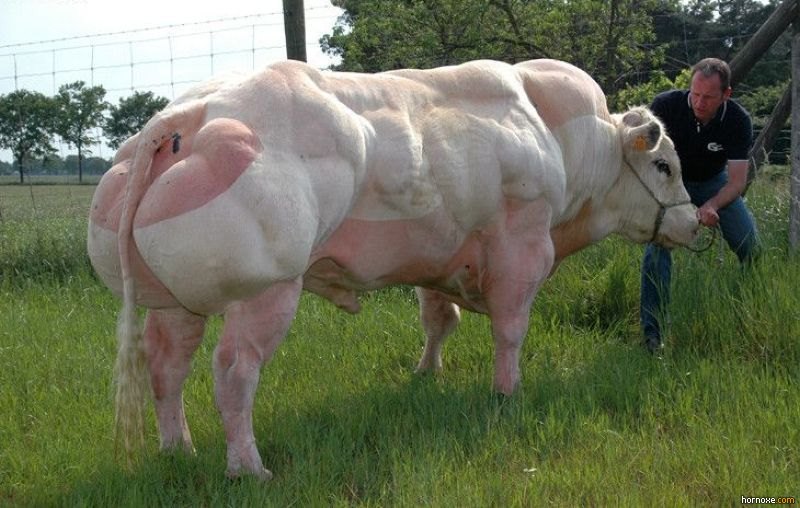
Natural selection is just that...natural. This means that nature decides which individuals will have a better chance at reproducing and passing on their genetic material to the next generation.
Remember being introduced to animals like the liger and tigon in the last unit? What do you think the chances are that those animals would be a natural occurrence? Think about it in terms of natural selection. Since lions and tigers do not live in the same geographical location, the chances of a pairing between these two animals would be impossible. In addition, there would be no reproductive advantage to the survival of either species of cat due to the creation of these hybrids. This alone goes against the theory of natural selection.
Ligers have actually occurred by accident with lions and tigers in captivity, but the captive environment in not natural, so it was human interference that initiated the creation of this hybrid animal.

Artificial Selection

After being hunters and gatherers for generations, humans realized that life would be much easier if they could stay in one place. To do that, they would need to domesticate plants and animals and find some control over their life cycles. Human manipulation can be as simple as trying to get a plant to survive in an area in which it naturally wouldn’t. When humans, rather than nature, decide which traits are the most desirable and then control breeding to manipulate those traits, this is called artificial selection.(definition:Selective breeding of plants and animals to produce desirable traits.)
Domestication of crops and livestock has been a huge advantage to our species, and has allowed us to create powerful civilizations. Evidence of humans picking and choosing traits that we find beneficial as a species and breeding those traits into the next generation has been found throughout history. Prior to the arrival of Europeans, the Indigenous peoples of the lower Great Lakes and St Lawrence regions planted two types of maize, squash and beans, and practised seed selection by choosing the seeds from only the best produce. This artificial selection helped ensure robust crops with the most desirable traits.
In addition to emphasizing the most important aspects of what we farm, we have been able to create new varieties of plants and animals. Each new variety has some advantage to us over the others in areas such as, higher meat and milk yield, better drought and pest resistance, and increased nutritional value. Almost every single food product we eat today is made from ingredients that were produced by artificial selection.
The Great Manipulation

Wild cabbage is easy to grow, and can survive in dry conditions. It produces thick leaves that stores water and nutrients such as Vitamin C. This plant has been domesticated for thousands of years, and has been an important food staple for many civilizations.
Having been domesticated for so long, it isn’t hard to imagine that artificial selection has produced a wide variety of plants from this original species. The interactive below shows you some of the varieties of vegetables that have come from the original wild cabbage, and the traits that each variety accentuates. Each vegetable is a variety, or cultivar,(definition:A plant variety that has been produced in cultivation by selective breeding.) of the same species Brassica oleracea. Try your hand at matching the cultivar to the trait that it was selected for.
Cabbage
Now that you have explored both natural and artificial selection, it is time for you to look at the advantages and disadvantages of both.
What Does it All Mean?
Although genetic diversity is a product of sexual reproduction, there are many factors at play when it comes to evolution. The process starts with mutations creating new versions of alleles. These new traits can then make some individuals better suited for the environment, giving them a better chance at reproductive success. Passing on these new traits to the next generation through natural selection can increase the allele frequency within a population. This, along with other factors, such as gene flow, genetic drift, and sexual selection, can be the drive behind evolutionary change over the generations.
In addition to this natural selection, humans have made an impact on various populations based on artificial selection. In this process, we often override the natural ‘survival of the fittest’ progression and influence the next generation based on traits that we feel are the most beneficial. There is debate as to whether or not our interactions with the natural evolutionary process are a help or a hindrance to the genetic diversity of our planet..
CONSOLIDATION
Artificial Enhancement

Human interactions with the natural world are nothing new. We often look for traits that we find desirable and suit our own purposes. These traits may not increase the fitness of an animal or plant in its local environment, but these organisms are not really meant to live on their own in the wild. Unfortunately, these artificially selected organisms do get out into the natural environment and can impact the allele frequencies in those populations. Almost without exception, the organisms that we help create or modify have an influence in our natural world.
Evolutionary Biology
Evolutionary biology is the subfield of biology that studies the process of evolution and how it contributes to the diversity of life on Earth. Take a look at this short video to get a feel for some of the research involving an evolutionary biologist.
In this next task, you will assume the role of an evolutionary biologist and follow in the steps of Darwin and his work with finches on the Galapagos Islands. You already know a bit about Darwin’s voyages from earlier in this activity, but take a few minutes to learn about his discoveries based on finches. The first video shows the traits of this species of bird. The second video will give you a better look at the different beak shapes found on Galapagos finches, based on the food source available to them:
 The Speed of Change
The Speed of Change
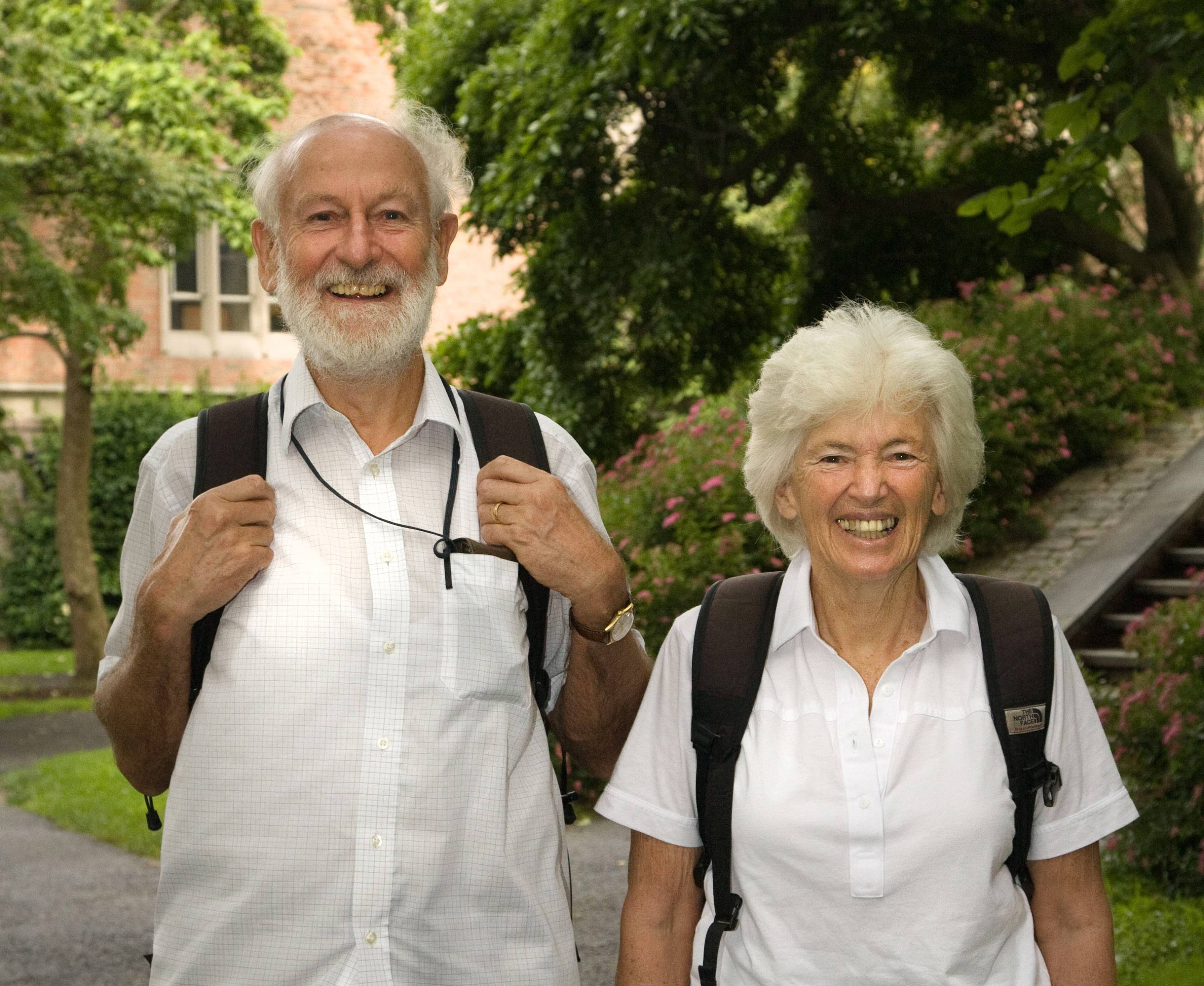
From 1973 to 2012, British evolutionary biologists Peter and Rosemary Grant spent six months capturing and tagging finches on Daphne Major and Santa Cruz in the Galapagos Islands.
Listen to Peter and Rosemary explain how the understanding of evolution has changed in their lifetimes.
Evolution was thought to take many generations to become apparent, but the Grants were able to show that evolution responds much more quickly to environmental conditions such as drought. This selective pressure is one of the “panda paws” you learned about earlier.
Much of their work focused on the connection between the beak shape of finches and natural selection, as mentioned earlier in this activity. Think back to your understanding of the meaning of 'survival of the fittest.' Your task is to analyse some raw data about the beak depth of parents and offspring to investigate the influence that environmental conditions and location have on the traits found within populations.
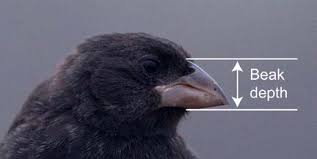
 Challenge
Challenge
Do the studies conducted by the Grants on the Galapagos Islands look at microevolution or macroevolution?
Answer
The changes in the finch beaks over short periods of time is an example of microevolution, as it is happening on a small scale and within a single population.
